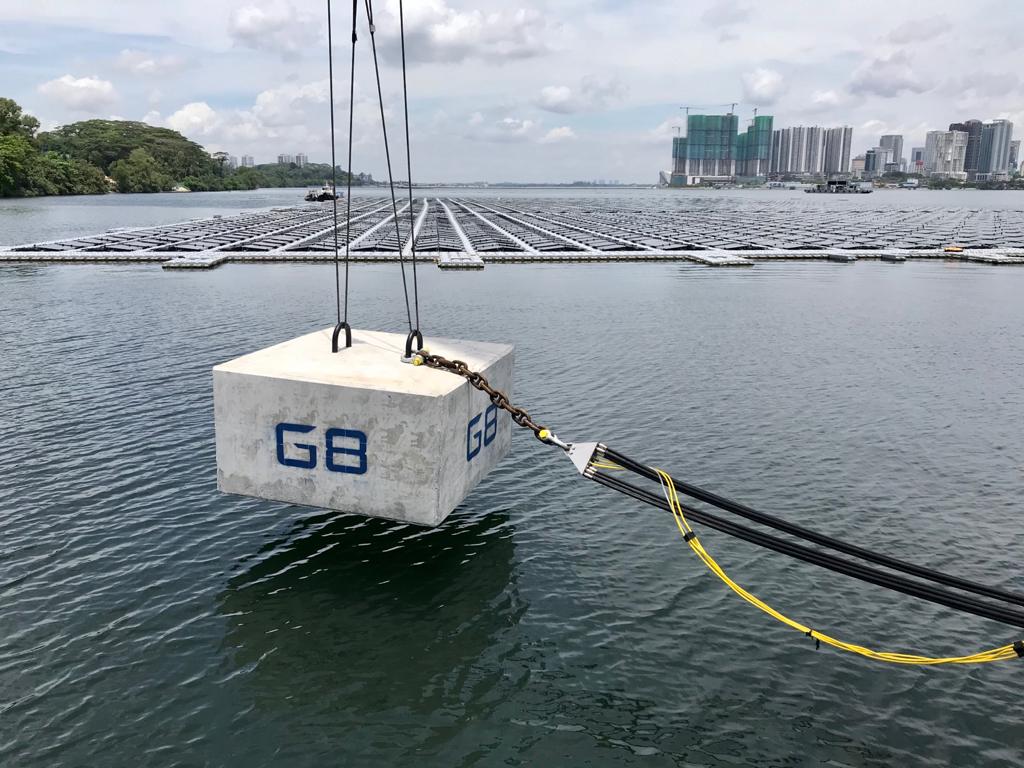As the International Renewable Energy Agency (IRENA) has noted, floating PV (FPV) is a growing niche, but within that niche, like a Russian doll, is the smaller but similarly growing niche of offshore FPV.
While FPV projects have now been installed on freshwater lakes and reservoirs in more than 40 countries, offshore FPV does not have the luxury of such calm and protected waters, meaning the equipment for offshore applications needs to be of exceptional, specialized quality.
Thankfully, the technology for these applications is improving rapidly. And considering a 2020 study by the U.S. National Renewable Energy Laboratory (NREL) estimated potential FPV on hydropower reservoirs at 7.6 TW, there has not yet been any serious calculation for the potential of offshore FPV.
Unlocking this potential depends on making the right technological advancements to develop offshore FPV arrays capable of withstanding ocean waves and winds. But there is no shortage of companies on the case. Take German wave energy technology specialist Sinn Power GmbH, for example – it recently unveiled its first floating ocean ‘hybrid’ platform, which combines wave, wind and solar energy.
A G8 spokesperson told pv magazine Australia that practical trials of the Modular Tractive Buoyancy (MTB) technology, as well as the subsea stabilization system and high-voltage subsea power connection to the floating hybrid plant, “have proven successful in Singapore with the Sunseap Woodlands Project. A 5 MW PV system together with a 20 MW marine rated substation installed in early 2020 off the northern coast of Singapore.”
“Our aim is to use this hybrid concept to increase the power generation capacity by up to two times that of a normal floating solar plant,” the spokesperson said. “G8 is presently in an advanced engineering study with WookYung Engineering and Construction of South Korea to construct a 3 MW turbine combined with 1 MW of solar on a stabilized platform.”
On the research side, scientists at Malta’s Institute for Sustainable Energy have developed a simulation tool to assess the effect of wave response motion in offshore floating PV installations.
G8 Subsea has announced its pipeline of projects until 2024 and the list contains some ambitious FPV installations. The projects include the 75 MW Sarawak FPV array in Malaysia by Sarawak Energy and a 100 MW FPV project in Ghana. On the engineering side, the company is also involved in the 145 MW Pandan FPV project in Singapore, and in the supply of floating substations for the 145 MW Cirata FPV array in Indonesia.
G8 Subsea told pv magazine Australia that discussions on these projects are at an advanced stage, but it noted that more information is currently bound up in non-disclosure agreements. That said, site engineering and construction works are expected to begin next year, once the pandemic subsides.
G8 Subsea is targeting an initial public offering in mid-2022, as it looks to firm up investment.
“We’re facing the greatest energy transition timeline of our generation,” said G8 Managing Director Gerald Tan. “And it’s all about solving a global problem, by developing better and more sustainable sources of energy. An IPO will enable us to enter the global renewables arena. We want to play at the international, not just the national level. The growth prospects of this industry are limitless, and a public listing would better equip us to leverage that growth.”
This content is protected by copyright and may not be reused. If you want to cooperate with us and would like to reuse some of our content, please contact: editors@pv-magazine.com.




Offshore PV always face the challenge of the sea wave, current and wind which constantly demand a robust and sustainable mooring system . This system is not cheap to wear off the 100 years storm design or lower. In order to meet the oil and gas requirement offshore, the mooring system must be designed with safety features or reliability not to pose any danger to the existing offshore oil and gas production platforms in the event of breakaway in severe monsoon weather.
In the case of remote minimum facility platform, the OPV will be an asset to support single or multiple MFP or retrofit current wellhead production platform where production is declining and loosing economical power for re-electrification.
The single most important factor is an economical mooring system capable to survive the monsoon weather for any success OPV venture.